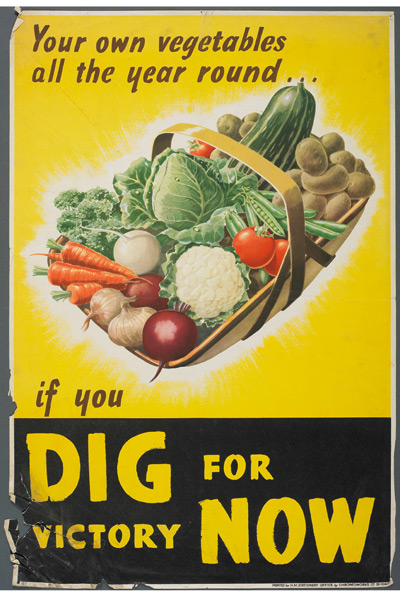Here are some statistics about wartime fruit- and vegetable-growing in England which this book tells us. In 1942-3, there were 1,750,000 allotments, amounting to 100,000 acres, or an area the size of Rutland. But in a 1944 survey, it was discovered that only 34 per cent of urban gardens were growing fruit and vegetables, and only 10.9 per cent of households cultivated an allotment. The north-west of England turned out the worst figures, with only 28 per cent of households growing vegetables. As Ursula Buchan writes, ‘Picking sun-warmed greenhouse tomatoes to add to a salad is a pleasure; weeding round shot-holed brassicas on a windswept allotment is not.’ And this was what weary English householders worked out for themselves, as the war wore on.
Another slightly dispiriting statistic: in the chapter called ‘Fiercely Stirring Cauldrons’, about the 4,500 jam-making centres run by strong-armed women who heroically produced 1,670 tons of the stuff in 1941, Buchan tells us that all this effort made less than 0.5 per cent of the national requirement for rationed jam.
This book is so much about vegetables and fruit — potatoes and brassicas on every page, unless it’s damsons or compost — that I found it hard, immersed in this literary cornucopia of produce, to work out how successful the Dig for Victory campaign actually was. Cheering statistics like the ‘size of Rutland’ one were negated by ‘0.5 per cent of the national requirement’ ones.
What is certain is that the government understood the steadying effect of gardening on the British psyche: it was a great ‘release valve’ for tension. The expression ‘Dig for Victory’, coined (probably) by Michael Foot in an unsigned Evening Standard leader in September 1939, and used on the ensuing poster of a muddy boot pushing a spade into a heap of soil, made a huge impact and gave British people a sense that they could all do something to help the war effort, even if it was only to plant a row of leeks.
A Green and Pleasant Land is elegantly written and rich with horticultural vignettes: potatoes being tended next to the runway at Manchester parachute base; vegetables growing on bomb-sites in Bethnal Green; tomatoes in pots outside gentlemen’s clubs in London; 793 packets of seeds being sent to prisoners and internees in Germany, Italy and France; the undergraduates of Lady Margaret Hall, Oxford, being goaded into getting out and helping to dig by the clever ploy of inflicting a diet of rice on them — rice, followed by rice pudding — to show them what life would be like if root vegetables really did run out.
Buchan celebrates the achievement of unsung gardeners such as Miss Beatrix Havergal and Miss Avice Saunders, who founded the Waterperry School of Horticulture for Women; and Gertrude Denman, who did so much to get the Women’s Institute movement going, as well as directing the Women’s Land Army.
But I did quite a lot of page-measuring while reading the book: a sure sign that one is not engrossed. (How many pages of notes are there at the end? Oh good, quite a few, so the book in fact ends on page 300 rather than 357.) I think the main problem is that it is entirely based on reading research. There is not (I’m pretty sure) a single interview with a living person — apart from one reference on page 160 to a head-gardener Buchan remembers speaking to in the 1970s. It would have been greatly enlivened by some direct quotes. At one point there’s a mention of Baroness Trumpington and I thought, Oh good — perhaps Buchan went to meet her. But it’s just a reference to an interview the Baroness gave to Elizabeth Grice in the Telegraph of 2012.
Also, the book tires you out with too much information. Do we really need to know the exact opening days of Wisley RHS garden in 1939? Or the fact that vegetable seed catalogues cost 1d but flower ones were free? Or that RHS monographs had to be shelved due to a shortage of paper and ink? Or about the eight sizes of cloche? If some of this had been left out, I might have had more of an appetite for the important information when it did come.





Comments